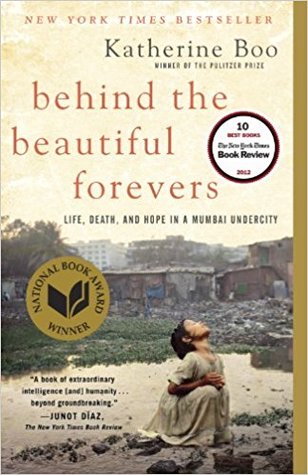More on this book
Community
Kindle Notes & Highlights
Like most people in the slum, and in the world, for that matter, he believed his own dreams properly aligned to his capacities.
It seemed to him that in Annawadi, fortunes derived not just from what people did, or how well they did it, but from the accidents and catastrophes they dodged. A decent life was the train that hadn’t hit you, the slumlord you hadn’t offended, the malaria you hadn’t caught. And while he regretted not being smarter, he believed he had a quality nearly as valuable for the circumstances in which he lived. He was chaukanna, alert.
His general approach toward his neighbors was this: “The better I know you, the more I will dislike you, and the more you will dislike me. So let us keep to ourselves.”
She was a chit in a national game of make-believe, in which many of India’s old problems—poverty, disease, illiteracy, child labor—were being aggressively addressed. Meanwhile the other old problems, corruption and exploitation of the weak by the less weak, continued with minimal interference.
In the West, and among some in the Indian elite, this word, corruption, had purely negative connotations; it was seen as blocking India’s modern, global ambitions. But for the poor of a country where corruption thieved a great deal of opportunity, corruption was one of the genuine opportunities that remained.
Manju wasn’t too interested in money. She hungered for virtue, a desire that was partly a fear.
As every slumdweller knew, there were three main ways out of poverty: finding an entrepreneurial niche, as the Husains had found in garbage; politics and corruption, in which Asha placed her hopes; and education.
He didn’t know if his mother was right about an earlier, peaceful age in which poor people had accepted the fates that their respective gods had written on their foreheads, and in turn treated one another more kindly. He just knew that she didn’t really long for companionable misery. She’d known abjectness, loathed its recollection, and raised her son for a modern age of ruthless competition. In this age, some people rose and some people fell, and ever since he was little, she’d made him understand that he had to rise.
On the high grounds of the liquid city, rich people spoke of the romance of monsoon: the languorous sex, retail therapy, and hot jalebis that eased July into August. At Annawadi, the sewage lake crept forward like a living thing. Sick water buffalo nosed for food through mounds of wet, devalued garbage, shitting out the consequences of bad choices with a velocity Annawadi water taps had never equaled. People, also sick, stamped the mud from their feet and said, “My stomach is on fire, my chest.” “All up and down this leg, all night.” The sewage lake’s frogs sang sympathetically, but you
...more
You didn’t keep track of a child’s years when you were fighting daily to keep him from starving, as she and many other Annawadi mothers had been doing when their teenagers were young.
when they spoke, it was with the curious formality of people who shared the understanding that much of what was said did not matter, and that much of what mattered could not be said.
Every country has its myths, and one that successful Indians liked to indulge was a romance of instability and adaptation—the idea that their country’s rapid rise derived in part from the chaotic unpredictability of daily life. In America and Europe, it was said, people know what is going to happen when they turn on the water tap or flick the light switch. In India, a land of few safe assumptions, chronic uncertainty was said to have helped produce a nation of quick-witted, creative problem-solvers.
Among the poor, there was no doubt that instability fostered ingenuity, but over time the lack of a link between effort and result could become debilitating. “We try so many things,” as one Annawadi girl put it, “but the world doesn’t move in our favor.”
Annawadi boys broadly accepted the basic truths: that in a modernizing, increasingly prosperous city, their lives were embarrassments best confined to small spaces, and their deaths would matter not at all. The boys were simply puzzled by the fuss, since they considered Robert’s horses the luckiest and most lovingly tended creatures in the slum.
In the age of global market capitalism, hopes and grievances were narrowly conceived, which blunted a sense of common predicament. Poor people didn’t unite; they competed ferociously amongst themselves for gains as slender as they were provisional. And this undercity strife created only the faintest ripple in the fabric of the society at large. The gates of the rich, occasionally rattled, remained un-breached. The politicians held forth on the middle class. The poor took down one another, and the world’s great, unequal cities soldiered on in relative peace.
In places where government priorities and market imperatives create a world so capricious that to help a neighbor is to risk your ability to feed your family, and sometimes even your own liberty, the idea of the mutually supportive poor community is demolished. The poor blame one another for the choices of governments and markets, and we who are not poor are ready to blame the poor just as harshly.


